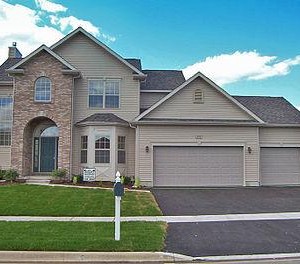- 4 Unexpected Things I’ve Learned From Buying My First Mobile Home Park
- How Ironic: America’s Rent-Controlled Cities Are Its Least Affordable
- U.S. homes are still a bargain on the international market
- Getting The Best Possible Quality Photos On MLSs and Syndicated Sites
- Home buyers in these markets have the upper hand
6-Figure Flips: 6 Reasons High-End Deals are Flourishing

It’s no secret that bigger deals typically generate bigger profits. However, it’s never been more true than today. This article examines six fundamental reasons higher-end single-family home flips are working better than ever.
Profit Motive. San Francisco, one of the most expensive home regions in the world with a median home price exceeding $1 million (per DataQuick), was ranked #1 with a median net gain of $194,000+ per “Fix and Flip” deal in 2013. According to Redfin, the median net profit earned by a California “fix and flip” investor in 2013 was over $100,000. Denver, Philadelphia, Seattle, Chicago, Portland, Baltimore, Washington D.C. were all reported to generate median “fix and flip” profits in 2013 within the $85,000 to the $113,000 profit range as well. To put this in perspective, there weren’t very many Americans who earned $85,000 to $200,000 in 2013 in their regular, full-time jobs, let alone just one quality “Fix and Flip” deal. Sadly, however, many “Fix and Flip” investors in the lower end price range region have received negative net returns on smaller “Fix and Flip” deals due to the combination of higher than anticipated repair costs, longer holding time periods due to less qualified buyers, and a higher percentage of foreclosures in those neighborhoods which negatively impacted property values.
Price Buoyancy. In some cases, foreclosed or severely delinquent “Shadow Inventory” homes may be purchased for as little as $1 in areas such as Detroit. In other regions of the USA, such as along the coastal regions in Southern California, Texas, or Florida, distressed homes may be acquired for $500,000 to several million dollars. Do $50,000 “Fixer Uppers” in crime-ridden and heavily vandalized neighborhoods – particularly when surrounded by 50 other distressed homes in the same area – seem like safe and wise investments today? Or, does buying the only available distressed $1 million home within a well-established neighborhood – one in need of minimal cosmetic upgrades and surrounding by homes worth $2 million and above – seem like a better potential deal with a much higher upside? There is significantly more upward price pressure, often called ‘forced appreciation’ or ‘price buoyancy’ on higher priced homes surrounded by other well-maintained, high-end properties.
Relative Loss. If you bought a home anywhere in the 2003-2006 era, you bought at or near the market peak. Between 2004 and 2006, the Federal Reserve increased interest rates seventeen (17) times. Afterwards, home values began to fall as foreclosures increased. Prices fell 5% to 40% or more in some areas. Median priced homes, for example in the $150,000 price range, fell on average (using 20%) $30,000. Homes in $1 million dollar neighborhoods fell (using 20%) $200,000. The magnitude of relative loss from this unprecedented “Housing Crash” was so much greater for higher end homes, making these homeowners far more likely to walk away from their “upside down” property. If that wasn’t enough, sadly, for many of the homeowners in homes prices above $500,000 or even $1 million plus dollars, a high percentage of lenders began to “freeze up” these clients existing HELOCs (Home Equity Lines of Credit) during the same era, regardless of payment status or balances, further ‘squeezing’ the owners of higher-end properties by eliminating the option to purchase or refinance their existing adjustable mortgage rate loans.
Liquidation Discount. These same relative values that worked against the borrower also work against the lenders holding defaulted mortgages. Loan loss (and holding costs) for higher priced homes are 5-20 times as great as media priced homes. With fewer buyers in the higher price range, and potentially longer hold times, lenders are forced to take an even greater liquidation discount, that is that amount of discount to value required to satisfy an investor, on these higher priced homes.
Wealth Impact Differential. The Credit Crisis financially damaged – even wiped out – too many Americans. However, the wealthiest Americans, those fortunate to own some of the most well-known and largest Dow Jones index stocks have seen their overall Net Worth rise along with the 10,000+ point Dow Jones price swing since the introduction of “Quantitative Easing” (QE), a process by which the Fed pumps money into the economy to buy up as many assets as possible so values don’t plummet. These newly created QE Millionaires from the booming U.S. stock market then, in turn, have acquired more quality high end properties in prime locations (i.e., coastal, large metropolitan cities, etc.) using all cash or even credit or margin lines from their stock portfolios, Wealth Advisors, or Private Banks. People who owned assets such as stocks and real estate have prospered the most with QE over the past half-decade. Yes, the rich got richer, so buyers for the $500K to $2 million range are back, stronger than ever.
Buyer Financing. Fix and Flip sellers in the under $100,000 price range are typically targeting potential buyers who will need to qualify for some type of a government-backed FHA loan. Approximately 97% of all funded residential loans nationally have either been government-backed or insured residential mortgages (i.e., FHA, VA, Fannie Mae, Freddie Mac, USDA), all of which are quite challenging to qualify for today. Additionally, these home buyers may only have a small down payment, and less than perfect credit. Conversely, high-end Buyers ($500,000 and above, depending upon the region) are more likely to be all cash buyers. They are also more likely to close escrow faster, another important factor for “Fix and Flip” sellers to reaching their desired ROI. Hence the success of many “Fix and Flip” deals may be tied directly to how qualified the potential buyers for the home will be, and financing is often unnecessary (all cash) on higher-end purchases.
As a real estate investor, you must decide which property price ranges offers you the best profit margins and highest ROI with the least amount of risk possible. Knowing some of the behind-the-scenes trends at play in today’s market should help you in making this decision.




 100% Secure
100% Secure
You must be logged in to post a comment Login